Kraj in
njegov
spomin
The memory of the place
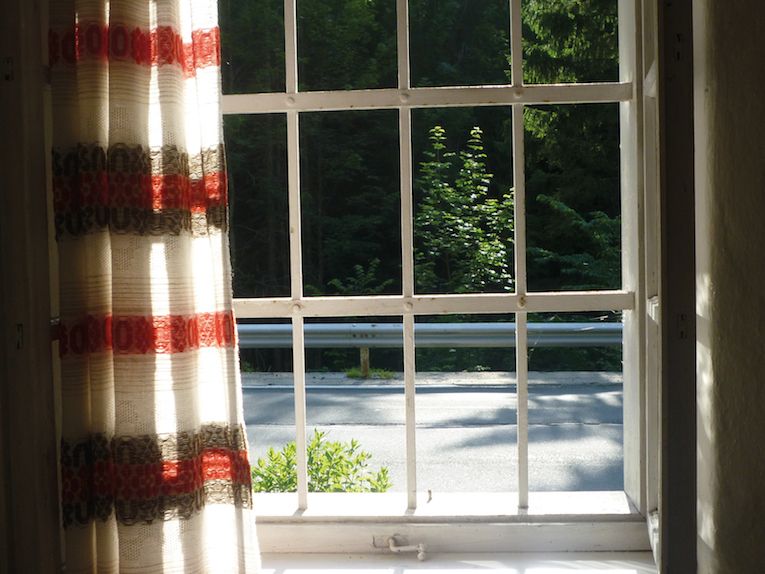
The memory of the place
Seven years ago we, my sister and I, set out in search of language. To make events that took place long before we were born visible in the microcosm of our family system. To be able to change their lasting effects in today. To simply be able to tell the story. Petra Kohlenprath, 2022
HOMEMADE (HI)STORIES
It began as a family story in a house in the Loibl Valley, and has become an important aspect of Carinthia. Sisters Petra Kohlenprath’s and Renate Rogi-Kohlenprath’s exploration of the house and the many stories lying dormant in it, awakened an essential part of Carinthia’s history and sparked discursive discussions. These pages convey, illustrate, document, and reflect what came to light in the course of the project for CARINTHIja2020: how many people were connected to this small house and are now bringing it back to life. The experiences of the Kohlnprath, Kohlenprat, Kollenprat, Kolenprat, Kohlenprath family reach far beyond the Loibl Valley, and this multi-layered reflection touches people who are not geographically connected to Carinthia or even to this special place. How nice that Brodi 1 offers the opportunity to experience and understand more of Carinthia. Tina Perisutti
Brodi 1, Loibltal
Brodi 1 in the Carinthian Loibl Valley was the home for the project Das Gedaechtnis des Ortes – Kraj in njegov spomin (The Memory of a Place), which was part of the Carinthian Provincial Exhibition CARINTHIja2020. For one year, the wooden hut became a public reading room, an exhibition, a place for storytelling and listening. Readings, lectures and concerts took place in the house and on the New Square.
The Brodi 1 house was built in 1896 by the imperial and royal road builder Miha Kohlnprat and his first wife Neža. Through the history of the house, the reconstruction of the lives of its inhabitants and the stories of Hanzi Kohlenprath, the son of Zefi and Paul Kollenprat and father of Renate Rogi-Kohlenprath and Petra Kohlenprath, the project provided access to 20th century Austrian history.
The project Das Gedaechtnis des Ortes – Kraj in njegov spomin (The Memory of a Place), organised by the Graz-based artists‘ collective Rhizom, was preceded since 2015 by the INTERFERENZEN (INTERFERENCES), discussions on women, migration, education, and democracy development, at Haus Brodi 1, Pavelhaus in Laafeld near Bad Radkersburg and in Graz. As a starting point for the discussions, Petra Kohlenprath, born in 1972, designed interventions with materials from the family archive in coordination with and in addition to contents from public archives. The stories of her father Hanzi Kohlenprath, who was born in 1939 in the house Brodi 1, formed an important link between then and now. What conditions and opportunities did the residents of Brodi 1 face at different times? What are they like today? What has remained the same? What has changed and when? In her „interventions“, Petra Kohlenprath referred to personal experiences, family stories and content conveyed through documents, postcards and photos, biographical narratives of others and the knowledge of historians. In this way, she was able to address topics that were obscured by myths or covered with taboos, and to start conversations. In 2020|2021, the content developed since 2015 in the INTERFERENZEN was presented in an overall multimedia showcase and enriched with further knowledge through additional events.
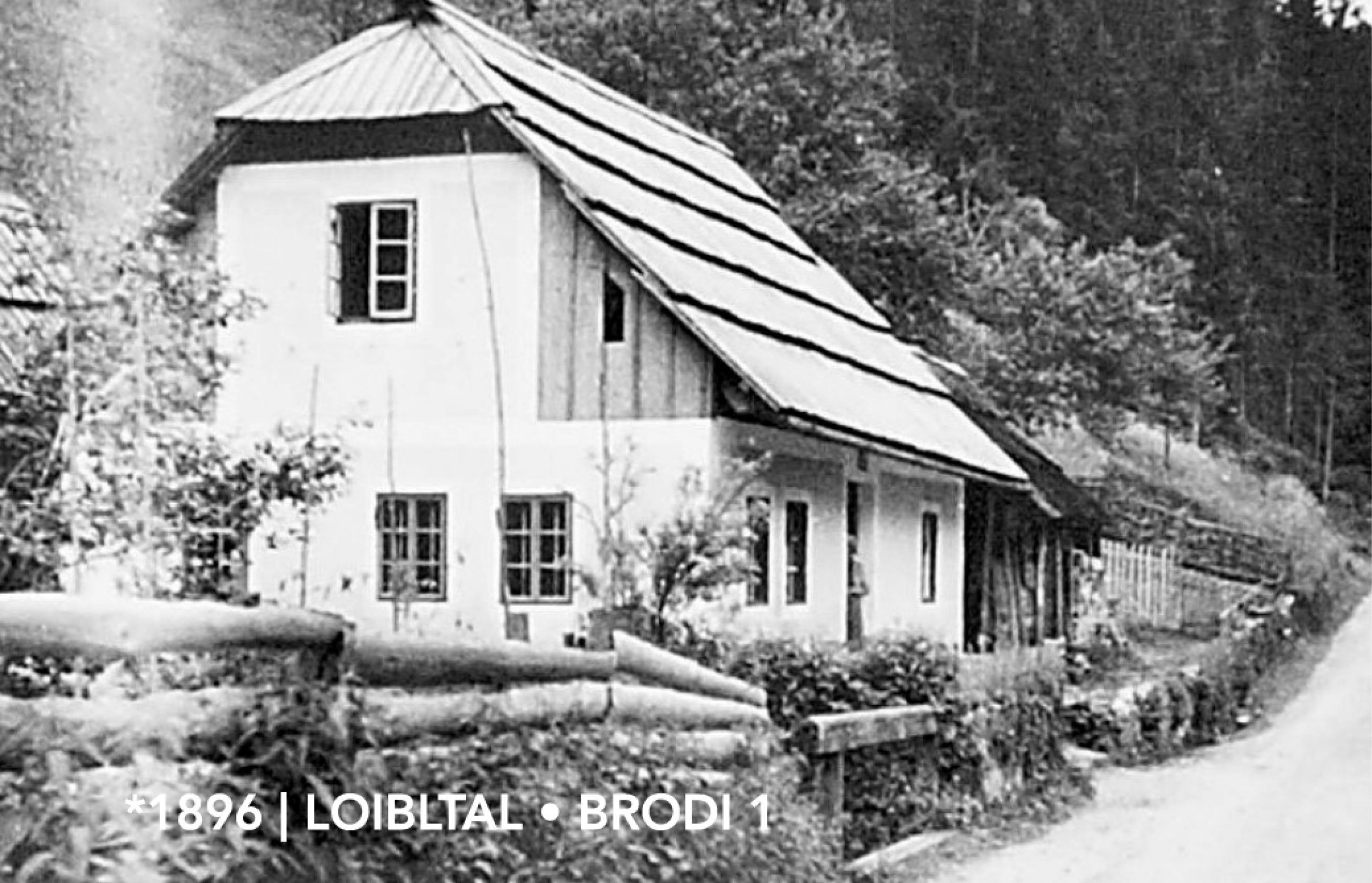
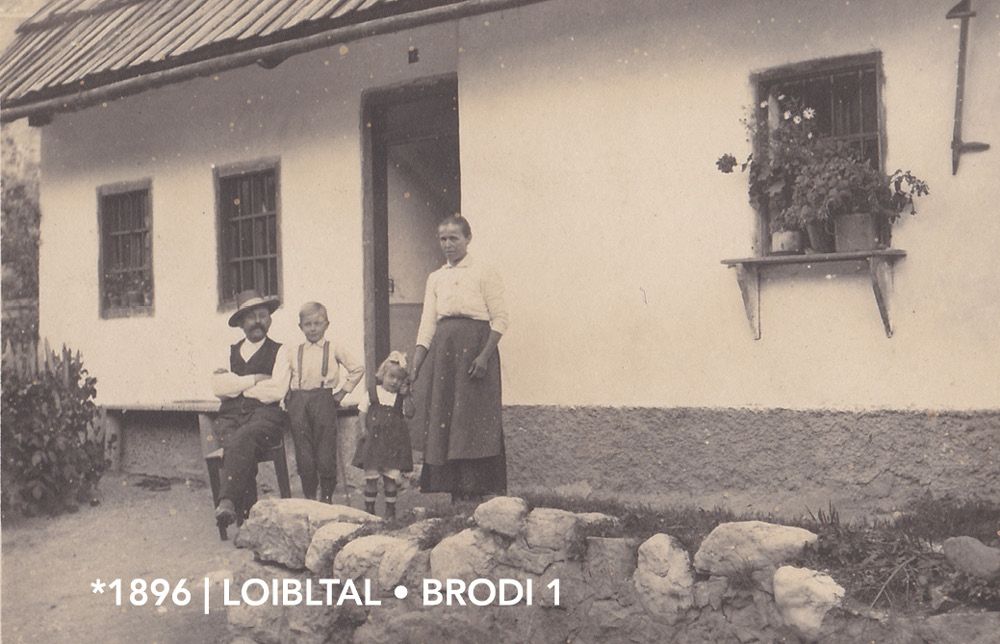
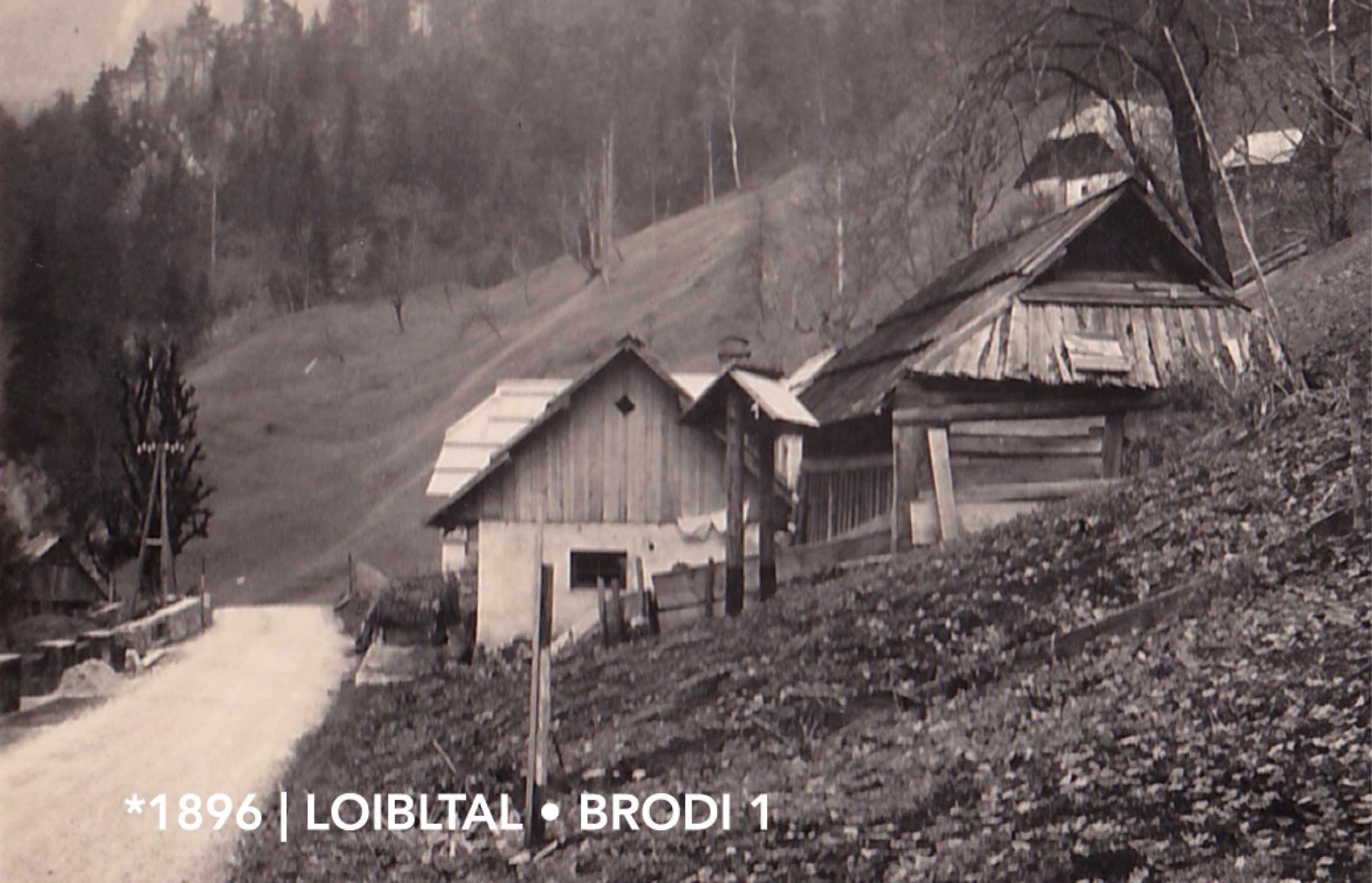
Brodi 1, the street to Loibl and us
What kind of future does our father’s childhood home in the Carinthian Loibl Valley, which has been uninhabited for decades, have? What meaning does this heritage have for us? These questions showed my sister Renate and me that we refused to accept some part of the intangible heritage associated with this place. But how can we get rid of these things? Or can we transform them?
For me, even more than for my sister, every crack of the house was filled with emotions that could not be lived (out) because the events that had triggered them were socially blanked out or covered by taboos or myths. My text Na pamet, from the memories of a Slovenian-German silent family enabled my sister and me, as WE Kohlenpraths, to take a stand. By opening the house, we saw the opportunity to help shape our heritage at the paternal place of origin of our history. The potential to be an interface that my sister saw in the house – to connect with others began to unfold after the first event. The reactions of the guests and the change in communication within the family regarding the old stories motivated us a lot to continue with the INTERFERENZEN and to make the personal knowledge stored in Brodi 1 visible step by step.
Nothing special had happened in Brodi 1, no one in our family had been of any consequence. This helped us to get into conversation by simply exchanging stories. The place is an example of many Austrian places, just as the lives of my ancestors were quite normal at that time. This allowed us to focus the project on everyday things, on common issues that affect many, if not all, people in some way, and to ask about comparable situations in family history in conversation with our guests. My ancestors – the generation of my grandparents, great aunts and paternal great uncles – took different paths politically. If today we (my sister and I) are perceived in the Loibl Valley – or rather in Ferlach, where we grew up – as coming from a Slovenian family, Slovenian is no longer an identity-forming characteristic for our grandcousins, even though we have the same great-grandparents. So we could meet our guests and listen to them without having to defend a self-contained family history.
My sister and I added another perspective to the narrative, as our mother is from Yugoslavia, now Slovenia. Unlike our father, who grew up as an only child, our mother had six siblings, so we spent a lot of time in Yugoslavia as children. As a result, we grew up not only with two languages, but also from an early age with the constant comparison and reconciliation of different social systems. The national border demarcation of 1920, which was abused populistically in Carinthia until well into the 2000s, had become obsolete for my sister and me in our personal family system when our parents married in 1966.


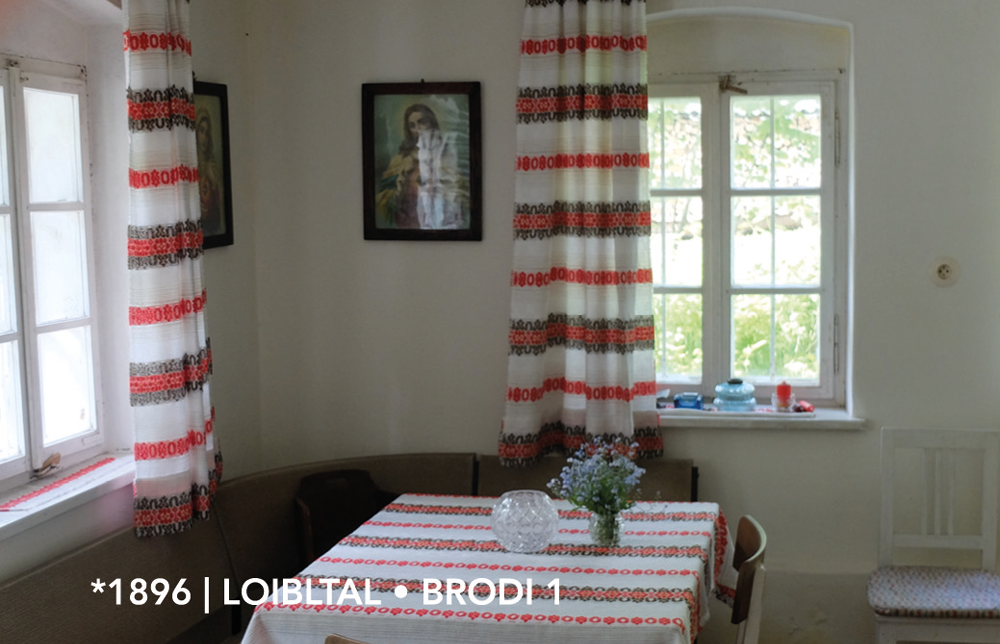
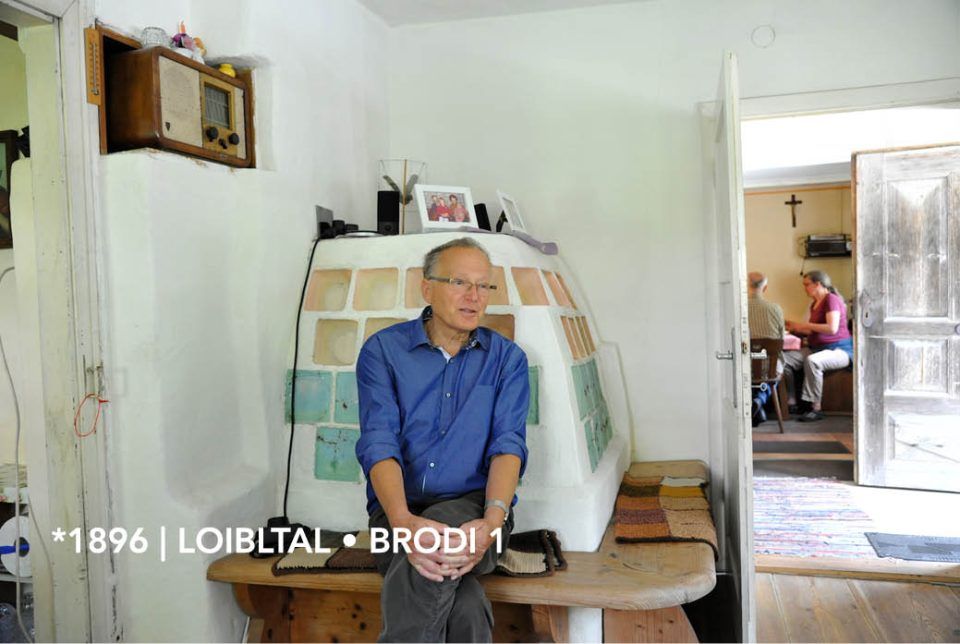
Give new memories to the house of Brodi 1
The intangible parts of our heritage, which my sister and I would have liked to dispose of in the past, became links to the (hi)stories of our guests by making them visible in the context of social, political and historical issues. By dealing with it in the INTERFERENZEN and the project Das Gedächtnis des Ortes – Kraj in njegov spomin (The Memory of a Place), the present of the past became a communication link. What kind of future does our father’s childhood home in the Carinthian Loibl Valley, which has been uninhabited for decades, have? Again we ask ourselves the same question – today under very different conditions.
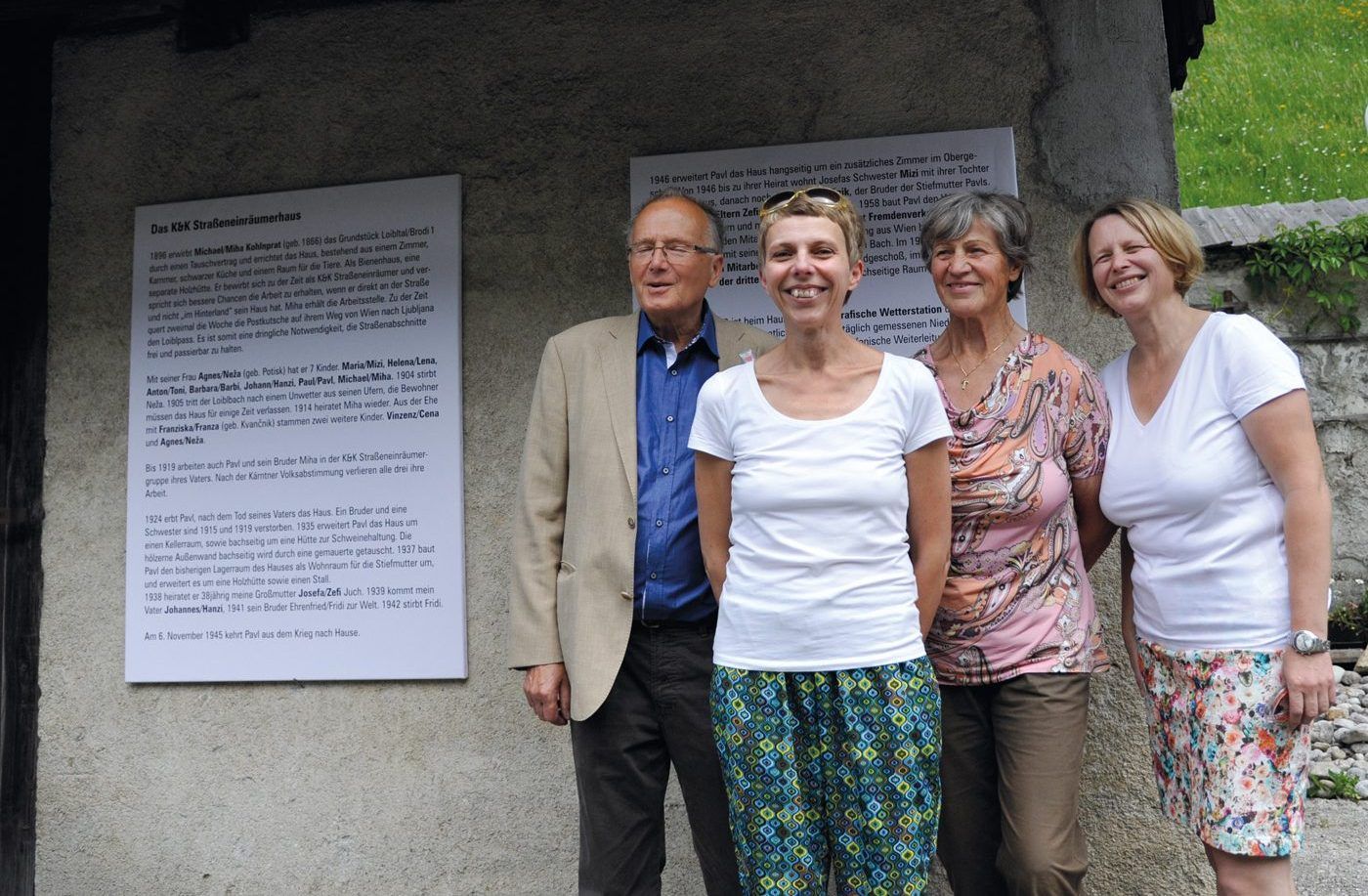
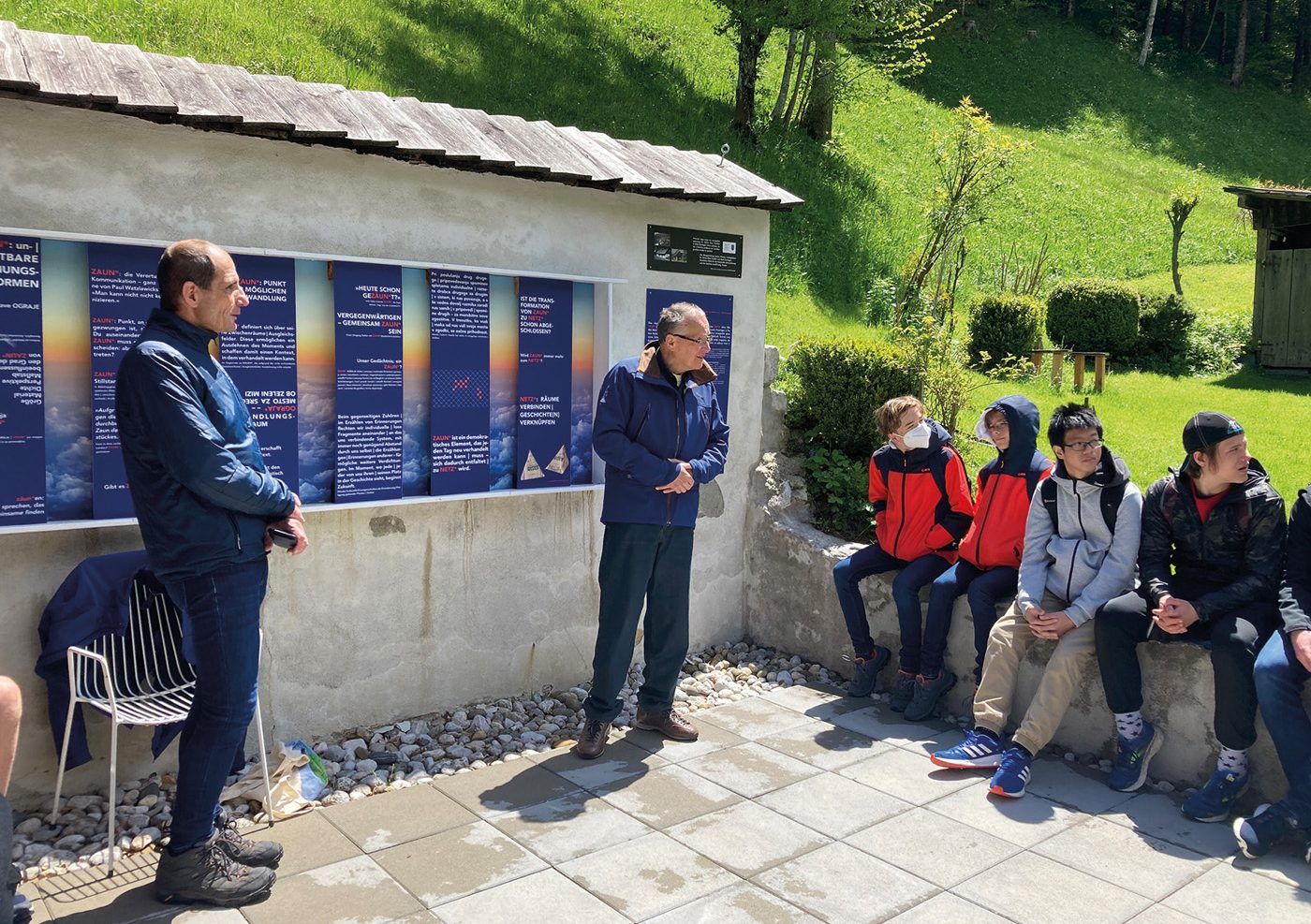
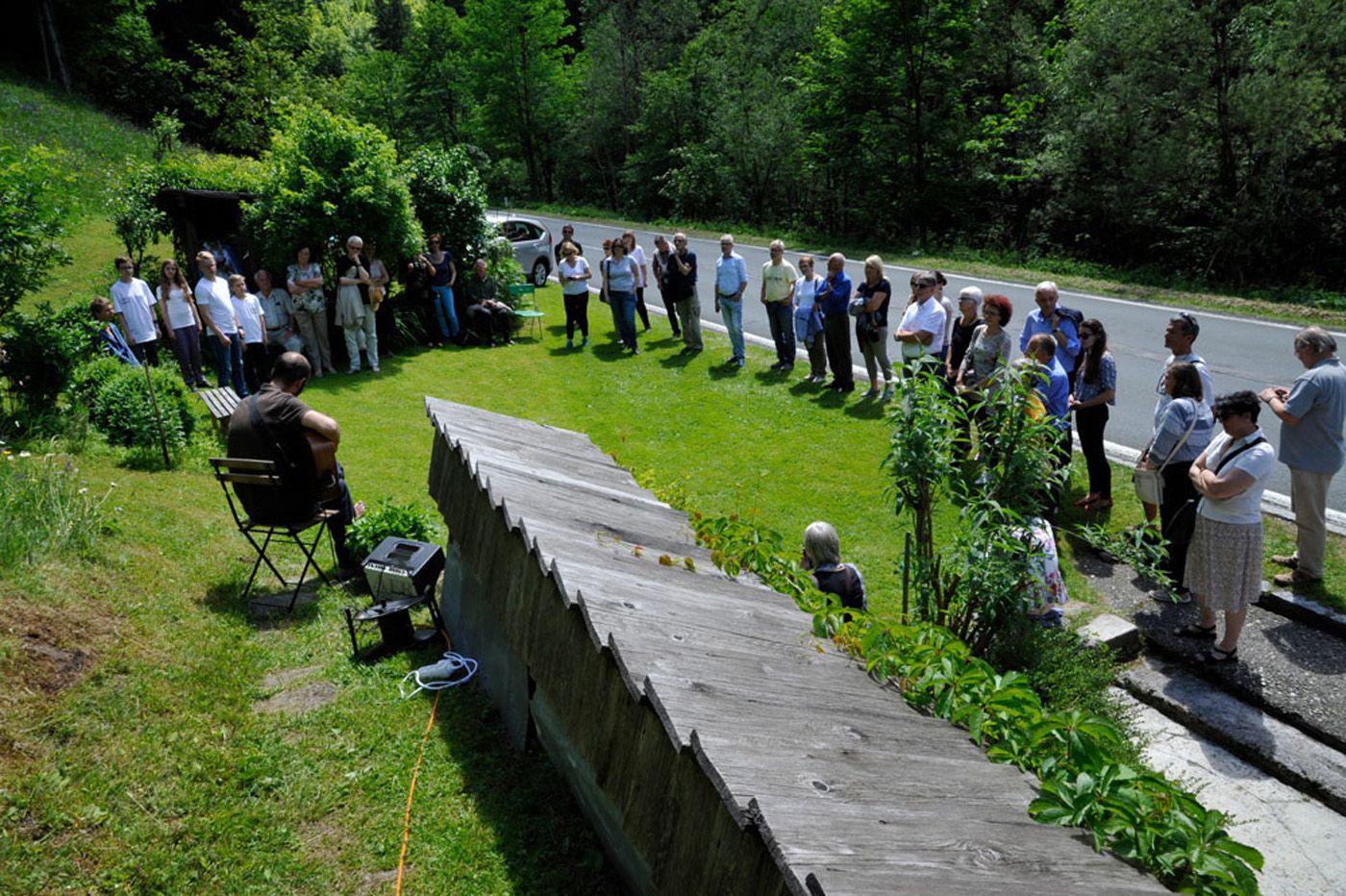
History of the house Brodi 1
In 1896 Miha and Neža Kohlnprat build the house Brodi 1 and move with their three children, Mizi, Lena and Tona, from the alp to the valley. Miha has just got a job as a imperial and royal road mender. The house is a residence, but also a storage place for materials and tools needed in road construction. Another four children, Hanzi, Betti, Paul and Miha, are born in the house Brodi 1.
In 1905 Neža dies.
In 1913 Miha marries Franca Kvančnik, a midwife from the valley. Two more children, Cena in 1914 and Neži in 1919, are born in the Brodi 1 house. Hanzi dies in 1915 and Betti in 1918. In 1920 Miha and his sons Paul and Miha lose their jobs in the civil service – probably because their loyalty to the wrong language. Tona, the eldest son, decides to emigrate to the newly established SHS state.
In 1924 Miha dies and leaves the house Brodi 1 to his son Paul.
In 1935 Paul adds a cellar room to the house and a hut for keeping pigs on the banks of the creek.The wooden outer wall on the creek side is replaced by a brick wall. In 1937 Paul converts the previous storage room of the house into living space for his stepmother and adds a wooden hut and a stable to the building.
In 1938 he marries Zefi Juch.
In 1939 Hanzi is born, in 1941 Fridi. In January 1942, Paul is drafted into the Wehrmacht. In 1943 Fridi dies.
In August 1944, Paul joins the resistance fighters and returns home on November 6, 1945.
From 1946 until their marriage, Zefi’s sister Mizi lives in the house with her daughter Renate, then Hansi Kvančnik, the brother of Paul’s stepmother moves in. On the hillside, Paul enlarges the house by an additional room on the upper floor. In 1957, Zefi’s parents move in for a few months.
In 1958 Paul converts the living space in the cellar and registers the house for tourism with the local council. For two summers, employees of the surveyor’s office from Vienna are accommodated in Brodi 1. The headman and his wife live in the room on the upper floor overlooking the creek. Two employees live in the room built on the slope side. A third staff member lives on the ground floor, in the small room overlooking the creek. The larger room on the creek side serves as the breakfast room.
From 1949 to 1973, the house hosts a hydrographic weather station of the province of Carinthia. The daily records are forwarded monthly to Klagenfurt on a monthly basis. The house serves as a postal delivery station and in 1964 it is connected to the electricity grid.
In 1973 Paul dies of pneumonia. After that, his son Hanzi is the owner of the house Brodi 1. Zefi remains in the house until 1978. In the following years she only lives there in the snow-free months.In 1979 the house gets a telephone connection.
In 1983 Zefi finally moves in with her sister Kati in Ferlach. Since then, the house has been uninhabited.
In 2003 Hanzi dismantles the stable, the storage room for the tools and the room built on the slope side after the war and covers the house anew.
Since 2015, the INTERFERENZEN have been held in Brodi 1.
In 2020|2021 Brodi 1 is one of the venues for the Carinthian Provincial Exhibition CARINTHIja2020.
